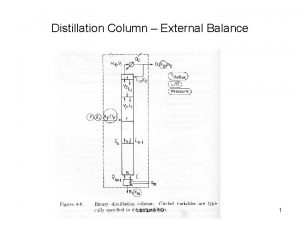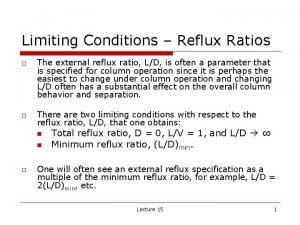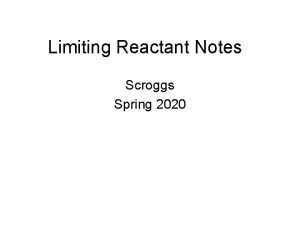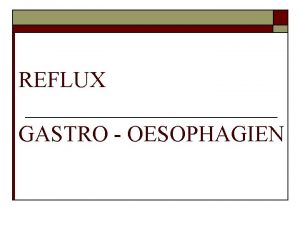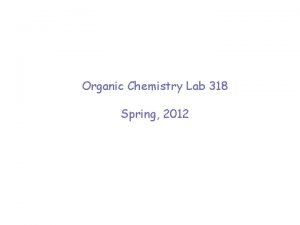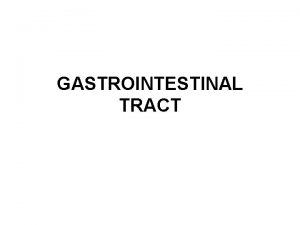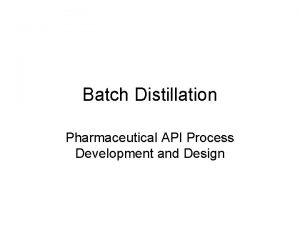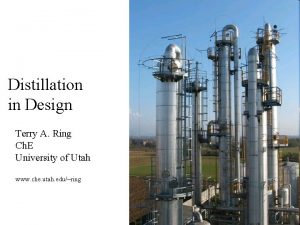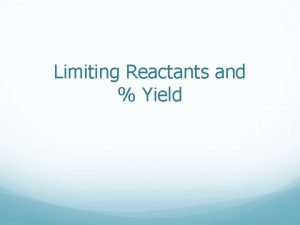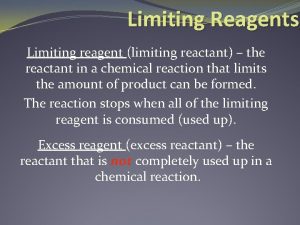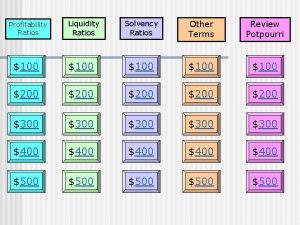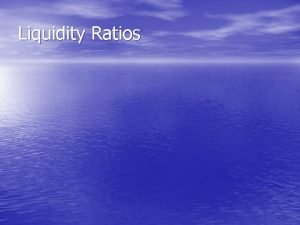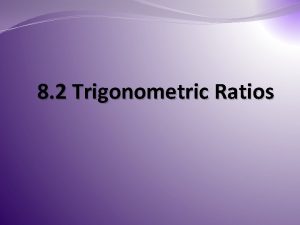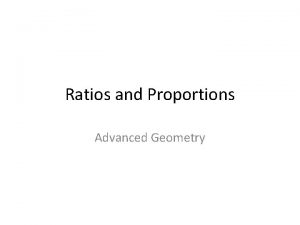Limiting Conditions Reflux Ratios o o The external











- Slides: 11

Limiting Conditions – Reflux Ratios o o The external reflux ratio, L/D, is often a parameter that is specified for column operation since it is perhaps the easiest to change under column operation and changing L/D often has a substantial effect on the overall column behavior and separation. There are two limiting conditions with respect to the reflux ratio, L/D, that one obtains: n n o Total reflux ratio, D = 0, L/V = 1, and L/D ∞ Minimum reflux ratio, (L/D)min. One will often see an external reflux specification as a multiple of the minimum reflux ratio, for example, L/D = 2(L/D)min, etc. Lecture 15 1

Total Reflux and Boilup – Limiting Condition o o o A column which has total reflux and boilup has no feed – the distillate, bottoms, and feed flow rates are zero. This is a limiting condition which provides one with the minimum number of equilibrium stages that can be obtained for a given column. While one would not typically operate under such conditions, total reflux and boilup are used for starting up a column, for operating the column off-line when other unit operations are off-line, and for testing column efficiency. Lecture 15 2

Limiting Conditions – Total Reflux o o o At total reflux: Both operating lines, TOL and BOL, become the y = x auxiliary line. Operating a column under total reflux yields the minimum number of equilibrium stages for a particular column. Lecture 15 3

Total Reflux Lecture 15 4

Total Reflux – Minimum Number of Equilibrium Stages Lecture 15 5

Limiting Conditions – Minimum Reflux o Minimum reflux, Rmin or (L/D)min, is defined as the external reflux ratio at which the specified separation could just be obtained with an infinite number of stages. o We obtain an infinite number of stages if our operating lines touch the equilibrium curve. o The point on the equilibrium curve that this occurs is called a “pinch” point. Lecture 15 6

Two Types of Pinch Points o o o For many systems, the pinch point will occur where the feed line crosses the equilibrium curve. A second type of pinch point can occur in “non-ideal” system where the operating line touches the equilibrium curve before the intersection of the feed line and the equilibrium curve. One should always look at a system to determine if a non-ideal pinch point occurs…Just don’t blindly assume it will be at the intersection of the feed line and equilibrium curve. Lecture 15 7

Minimum Reflux – Infinite Number of Equilibrium Stages Lecture 15 8

Limiting Conditions – Minimum Boilup o o A minimum boilup ratio, (V/B)min, can be similarly defined as the boilup ratio at which the specified separation could just be obtained with an infinite number of stages. Because of this relationship of the BOL’s slope, L/V, to the boilup ratio, V/B, we have a maximum L/V at minimum boilup, V/B. Lecture 15 9

Possible Reflux Operating Conditions Lecture 15 10

Rule of Thumb o o o The best operating condition lies between minimum and total reflux. As a rule of thumb, the optimum reflux ratio lies between 1. 05 and 1. 25 (L/D)min. Too low of an L/D results in a large number of equilibrium stages, while too high of an L/D increases the reboiler duty as well as the required diameter of the column. Lecture 15 11
